In This Issue
- Security Not Enough
- Norigin & Verimatrix
- Moving to HTML5 PM
- Report from the CEO
- White-box for Mobile
- Match / Music Library
- Spark’s Capabilities
- Optimized MC Routing
- Cisco’s IoT System
- Meteor – App Platform
- Cloud Vid Surveillance
- OpenStack / Open Sce
- Cloud Integrators Wrd
- Cloud Storage Options
- Amazon Vs. Alibaba
- Cloud Success Reality
- Coming DCIA Events
Conventional Security Not Enough for Cloud
Excerpted from CloudTech Report by James Bourne
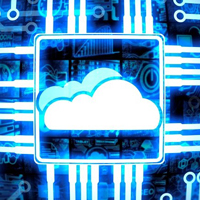 Earlier this week, this publication reported on a C-level study, which showed a distinct lack of trust in cloud storage for fully securing corporate data. Now, a new survey from CloudPassage sheds light on the security executive perspective: 80% of security execs in North America don’t believe conventional network security solutions are enough to protect their cloud computing environments.
Earlier this week, this publication reported on a C-level study, which showed a distinct lack of trust in cloud storage for fully securing corporate data. Now, a new survey from CloudPassage sheds light on the security executive perspective: 80% of security execs in North America don’t believe conventional network security solutions are enough to protect their cloud computing environments.
This is an interesting finding, not least because the amount of IT real estate based in public, private, or hybrid cloud environments is expected to reach 58% in the next 18 months compared to 43% today, according to the respondents. Similarly, while two thirds of customer data resides on-premise, that number is expected to fall to 50% in 18 months with 31% in private cloud and 19% in public cloud — so the pressure is on.
There were not many surprises when respondents were asked about the top drivers for adopting cloud infrastructure: improved agility and scalability (74%) won out ahead of cost efficiencies (67%), reduced IT overhead (60%), and faster time to market (55%).
Surprise, surprise, security concerns (66%) in general were the number one barrier impeding cloud infrastructure deployments… Read More
Norigin Ties-Up with Verimatrix for Encryption
Excerpted from Telecompaper Report
 Norigin Media unit Cloudncoder has announced a partnership with Verimatrix to secure transcoded secure linear television content in the cloud. This will enable joint customers to ensure revenue security for over-the-top (OTT) premium TV services that require multi-digital rights management (DRM) protection, while making the transition to cloud architecture.
Norigin Media unit Cloudncoder has announced a partnership with Verimatrix to secure transcoded secure linear television content in the cloud. This will enable joint customers to ensure revenue security for over-the-top (OTT) premium TV services that require multi-digital rights management (DRM) protection, while making the transition to cloud architecture.
Cloudncoder downlinks live satellite or IP feeds and transcodes them for multi-screen distribution via content distribution networks (CDNs). Pay-TV operators with OTT video services are increasingly choosing the multi-DRM approach, for which Verimatrix is known. The integration of Cloudncoder Verimatrix will allow live content to be encrypted with the various DRM options required by the individual services.
Cloudncoder, a Live TV transcoding platform, is a flexible cloud-based encoding platform for premium linear content. The platform is capable of custom integrations to ingest satellite feeds from Europe or IP feeds from anywhere in the world through its IP Contribution Feed partners.
Verimatrix was founded with a singular mission — to leverage proven content standards, Internet security technologies and a “can do” teaming approach to help enable the then nascent world of Telco TV operators… Read More
Moving to HTML5 Premium Media
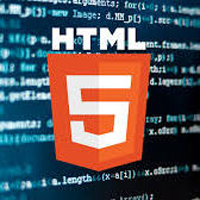 The commercial media industry is undergoing a major transition as content providers move away from proprietary web plug-in based delivery mechanisms (such as Flash or Silverlight), and replace them with unified plug-in free video players that are based on HTML5 specifications and commercial media encoding capabilities.
The commercial media industry is undergoing a major transition as content providers move away from proprietary web plug-in based delivery mechanisms (such as Flash or Silverlight), and replace them with unified plug-in free video players that are based on HTML5 specifications and commercial media encoding capabilities.
Browsers are moving away from plug-ins as well, as Chrome is with NPAPI and Microsoft Edge is with ActiveX, and toward more secure extension models.
The transition to plug-in free media has been enabled through the recent development of new specifications: from W3C: Media Source Extensions for adaptive streaming and Encrypted Media Extensions for content protection; and from the Moving Picture Experts Group (MPEG): DASH and Common Encryption (CENC).
These specs were designed and developed to enable interoperable streaming to a variety of media platforms and devices. By focusing on interoperable solutions, content providers are able to reduce costs and at the same time users are able to access the content they want on the device they prefer using the app or web browser of their choice. Microsoft believes that this is a huge benefit to both content producers and consumers, and is committed to supporting companies that make this transition… Read More
Report from DCIA CEO Marty Lafferty
 The Distributed Computing Industry Association (DCIA) would like to thank the ten attendees who participated in the formative meeting of the Advancement of Digital Rights Management (ADRM) Working Group.
The Distributed Computing Industry Association (DCIA) would like to thank the ten attendees who participated in the formative meeting of the Advancement of Digital Rights Management (ADRM) Working Group.
DRM interoperability, integration, and ease-of-use were identified by participants as key areas for industry advancement.
At the meeting, the ADRM Mission Statement was ratified; and it has now been published on the DCIA website.
Polling activity among 100 prospective group participants was reviewed and discussed to help prioritize ADRM action items focusing on five basic constituent groups.
The five constituencies include DRM platform providers, consumer electronics manufacturers, content rights holders, consumers, and industry opponents.
The consensus of participants at the formative meeting was that ADRM’s priority work should be to streamline interoperability of multiple content formats across multiple devices and chipsets.
This must be done in such a way that competition and continuing innovation of DRM platforms are supported while the implementation process is simplified.
It is important for the ADRM Working Group to define who it is, what its goals are, and explain its purpose and motivation.
Once the key players are at the table with the ADRM Working Group, the focus will be jointly to identify certain commonalities and develop easier way(s) to integrate DRM technologies.
DRM industry participants and major content providers including motion picture studios and television programmers are welcome and encouraged to join the Advancement of Digital Rights Management (ADRM) Working Group.
There is now also an ADRM Working Group page on Linked-In to help with communication.
Meeting minutes were circulated among invitees; and the next ADRM Working Group meeting will take place on July 30th. Share wisely, and take care.
White-Box Cryptography Secures Mobile Services
Excerpted from whiteCryption Press Announcement
 whiteCryption, an Intertrust company and Silicon Valley’s leading provider of software code and data protection technologies, announced today that Xiaomi, the world’s third largest smartphone distributor that designs, develops, and sells mobile phones and consumer electronics, has licensed whiteCryption’s Cryptanium Code Protection and Secure Key Box technologies to protect Xiaomi’s mobile application and sensitive data for mission critical global mobile services. This agreement extends Xiaomi’s relationship with Intertrust Technologies Corporation.
whiteCryption, an Intertrust company and Silicon Valley’s leading provider of software code and data protection technologies, announced today that Xiaomi, the world’s third largest smartphone distributor that designs, develops, and sells mobile phones and consumer electronics, has licensed whiteCryption’s Cryptanium Code Protection and Secure Key Box technologies to protect Xiaomi’s mobile application and sensitive data for mission critical global mobile services. This agreement extends Xiaomi’s relationship with Intertrust Technologies Corporation.
“Xiaomi is a leading innovator in the development of service enabled mobile devices,” said Thorsten Held, Managing Director of whiteCryption. “We are proud to partner with Xiaomi to push the envelope further. Whenever Tamper Resistance is one of the core building blocks of an application, the combination of our Code Protection and FIPS 140-2 certified Secure Key Box enables innovative software solutions.”
whiteCryption’s technology stands out by offering integrated software code protection, integrity check and white-box cryptography solutions that turn modern software applications on various platforms into self-diagnostic and self-protecting software products. According to Hongfeng, Co-founder & Vice President of Xiaomi, “App security and data security are Xiaomi’s top priorities for our users. We are pleased to have selected whiteCryption… Read More
iTunes Match Vs. iCloud Music Library
Excerpted from Kirkville Report by Kirk McElhearn
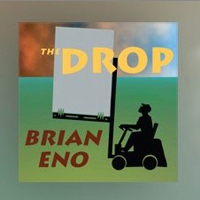 The whole iTunes Match and Apple Music thing is confusing. Apple says they are “independent but complementary,” and, on first glance, they look quite similar. But when you look closely, they are very different.
The whole iTunes Match and Apple Music thing is confusing. Apple says they are “independent but complementary,” and, on first glance, they look quite similar. But when you look closely, they are very different.
Both match your iTunes library and store your purchases. Both allow you to access these files, and listen to them, on multiple devices.
But with iTunes Match, when you download a matched or uploaded file, you get either the iTunes Store matched copy, or the copy that iTunes uploaded of your original file.
When you match and download files from iCloud Music Library (without having an iTunes Match subscription), however, you get files with DRM; the same kind of files you get when you download files from Apple Music for offline listening. (These files should have DRM, so you can’t just download and keep all the music you want for $10 a month.)
But if you’re using Apple Music, and not iTunes Match, Apple doesn’t make a distinction between which files were originally yours, and which you downloaded for offline listening from Apple Music.
This means that if you’ve matched your library with Apple Music and iCloud Music Library… Read More
Making the Most of Spark’s Capabilities
Excerpted from Database Trends & Applications Report by Adam Shepherd
 To provide more information and thought leadership on the framework, IBM, which recently announced a major commitment to Apache Spark, sponsored a DBTA webcast. The webcast featured presenters Trent Gray-Donald, Distinguished Engineer, IBM Analytics — Cloud Data Services, and Luis Arellano, Program Director, IBM.
To provide more information and thought leadership on the framework, IBM, which recently announced a major commitment to Apache Spark, sponsored a DBTA webcast. The webcast featured presenters Trent Gray-Donald, Distinguished Engineer, IBM Analytics — Cloud Data Services, and Luis Arellano, Program Director, IBM.
According to IBM, Spark is potentially the most important new open source project in a decade that is being defined by data because it dramatically improves the performance of data dependent apps and radically simplifies the process of developing intelligent apps, which are fueled by data.
A recent survey showed that 72% of users were aware of Spark, and that 66% have either implemented Spark or were evaluating it for implementation. Spark includes a core of libraries that enable numerous analytical methods. The four core libraries of Spark are Spark SQL, Spark Streaming, MIIib, and GraphX.
The reasons for Spark’s growing popularity are the productivity and financial benefits it provides. It contains a concise and expressive syntax while also being integrated with common programming languages. Spark is unique in that it competes with Hadoop but works alongside it as well. In terms of deployment options, Spark can run side-by-side with MapReduce… Read More
Optimized Routing for Mobile Cloud Computing
Excerpted from Brazilian Journal of Science & Technology Report
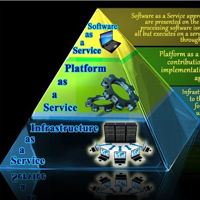 Mobile cloud computing (MCC) is a combination of cloud computing, mobile telephony, and wireless networks.
Mobile cloud computing (MCC) is a combination of cloud computing, mobile telephony, and wireless networks.
It is essentially a concept which allows streaming of feature rich mobile applications in a manner that is beneficial for mobile device users, service and application providers. Mobile device users no longer have to bank on expensive hardware in order to experience quality applications that might require either extensive computing performance beyond the existing capacities offered by current hardware.
Service providers can, at the same time, scale their operational requirements based on subscriber base. In other words, service providers can house their operations in Infrastructure-as-a-Service (IaaS) cloud computing models.
Application developers, similarly, can hire Platform-as-a-Service (PaaS) services to develop, test and market their products. In a Software-as-a-Service (SaaS) cloud model, entire software suites and products can be served to users over internet and mobile networks without the need for installing whole software on users’ computing devices.
The pyramid-like structure of how these cloud service models are layered one after the other is depicted in Figure 1. The combination of mobile communications and cloud computing are growing immensely popular… Read More
Cisco Launches System to Simplify the IoT
Excerpted from PCR Report by Laura Barnes
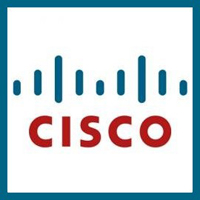 Cisco has launched its IoT System, comprising of six technology ‘pillars’ which — when combined together into an architecture — help ‘reduce the complexities’ of the Internet of Things (IoT).
Cisco has launched its IoT System, comprising of six technology ‘pillars’ which — when combined together into an architecture — help ‘reduce the complexities’ of the Internet of Things (IoT).
Designed to simplify IoT for businesses and cities, the six pillars of the IoT System are:
Network Connectivity: This pillar includes purpose-built routing, switching, and wireless products available in ruggedised and non-ruggedised form factors.
Fog Computing: ‘Fog’ is a distributed computing infrastructure for the Internet of Things (IoT) which extends computing capability — and thereby data analytics applications – to the ‘edge’ of networks. It enables customers to analyze and manage data locally, and thereby to derive immediate insights from connections. Cisco predicts that 40 per cent of IoT-created data will be processed in the fog by 2018. Over 25 of Cisco’s network products are enabled with Cisco’s fog computing or edge data processing platform, IOx.
Security: The security pillar of the IoT System unifies cyber and physical security to deliver operational benefits and increase the protection of both physical and digital assets… Read More
Meteor — The App Platform for Cloud-Client Computing
Excerpted from Forbes Report by Anthony Kosner
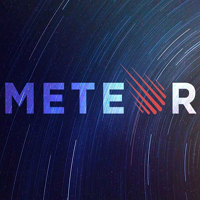 What is an app? Most people think of them as the little, self-contained bits of software on our phones. They have shiny icons, and we get them through app stores. Sometimes they are useful. Often they are amusing distractions.
What is an app? Most people think of them as the little, self-contained bits of software on our phones. They have shiny icons, and we get them through app stores. Sometimes they are useful. Often they are amusing distractions.
But there is another way to think about apps in terms of the data they consume and create. In this view, apps are what will turn the global network of smartphones into a massively distributed computing platform. Everything we know about user experience still applies in this world, but reducing friction for each user is only part of the problem.
The bigger issue becomes how to coordinate the data bouncing around between all of these devices and servers in the cloud. This coordination is the primary problem that the JavaScript app platform Meteor has set itself to solve.
In order to scale, the solution must be simple. Skilled app developers and data scientists are already in scarce supply. Software may be eating the world, as Marc Andreessen says, but not, in fact, nearly fast enough to keep pace with global problems it could be solving.
Andreessen Horowitz has invested in both Meteor’s A and B rounds (Matrix Partners led the B round with total funding now more than $30 million)… Read More
Cloud Computing Revolutionizes Video Surveillance
Excerpted from Capita Report by Paul Thomas
 It seems hard to remember a time before our every move was tracked by closed-circuit television (CCTV). There are now more than 5.9 million CCTV cameras in the UK, according to the British Security Industry Authority (BSIA). So whether in the supermarket, driving your car, or walking down the street, there is a good chance you are under the watchful gaze of a camera.
It seems hard to remember a time before our every move was tracked by closed-circuit television (CCTV). There are now more than 5.9 million CCTV cameras in the UK, according to the British Security Industry Authority (BSIA). So whether in the supermarket, driving your car, or walking down the street, there is a good chance you are under the watchful gaze of a camera.
However, long gone are the days of someone sitting in a darkened room watching live footage of your movements, with hours of film stored on dust collecting servers.
Now the data captured on film is more likely to be automatically stored in the cloud at a remote and highly secure data center, ready to be streamed to any device — whether a tablet, mobile phone, or web browser. This enables organizations of any size to implement the most appropriate and cost-effective system possible, minimizing infrastructure costs and simplifying installation.
This process is known as video surveillance as a service (VSaaS) — a market which is expected to reach a value of $48.32 billion by 2020, according to a recent report by Transparency Market Research… Read More
Evolution of OpenStack and Open Source Cloud Computing
Excerpted from TheServerSide Report by Cameron McKenzie
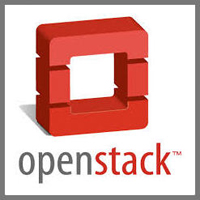 It was back in June of 2013 when TheServerSide was first introduced to OpenStack, Red Hat’s ambitious attempt to do for cloud computing what they did with the open source Linux model, that is, make a commodity out of it leverage it as a major revenue stream. From the 2013 Red Hat Summit, we first floated the basic What is OpenStack? articles, while asking questions such as Will the Red Hat model work for IaaS cloud computing?
It was back in June of 2013 when TheServerSide was first introduced to OpenStack, Red Hat’s ambitious attempt to do for cloud computing what they did with the open source Linux model, that is, make a commodity out of it leverage it as a major revenue stream. From the 2013 Red Hat Summit, we first floated the basic What is OpenStack? articles, while asking questions such as Will the Red Hat model work for IaaS cloud computing?
Stepping forward in time to 2015, we have seen an incredible ecosystem build around OpenStack, as organizations who want to leverage the benefits of open source software when building hybrid cloud infrastructures are constantly opting for this software.
At the 2015 OpenStack Summit in Vancouver, it was impressive to see the just how much OpenStack has grown, with more and more vendors doubling down on the project.
If you’re not familiar with OpenStack, it’s worth investing some of your time learning about it.
Here’s a collection of articles from TheServerSide and the TechTarget family of sites that will help you familiarize yourself with OpenStack and what’s going on in the world of open source cloud computing… Read More
A Word About Cloud Computing Integrators
Excerpted from Nasdaq Report by Stefan Topfer
 As the cloud market is maturing, we can expect a consolidation of this vibrant market. Whereas the initial upsurge was dominated by app developers and providers, the next phase will see an increasing focus on cloud solution providers.
As the cloud market is maturing, we can expect a consolidation of this vibrant market. Whereas the initial upsurge was dominated by app developers and providers, the next phase will see an increasing focus on cloud solution providers.
Some organizations are using hundreds of apps, not including those apps employees have acquired without involving the corporate IT department. Managing these huge numbers of apps has become a task in itself. Integrating them can be difficult, expensive, time-consuming, and often simply impossible.
Some corporate IT providers such as SAP are offering cloud solutions for core business units such as human resources, finance, sales, marketing, and procurement. Salesforce started off with a CRM solution and added on additional functionality. WinWeb has taken a corporate view and has developed a comprehensive cloud system which integrates the different functions in one package.
It could be argued that each model has its strength and weaknesses. What matters to organizations is that their business is supported in the most efficient way, whichever cloud services they employ. In an increasingly unstable global economy the cost of cloud services will continue to be a crucial element, but equally important will be additional benefits… Read More
Cloud Storage: Five Enterprise Options
Excerpted from ZDNet Report by Mary Shacklett
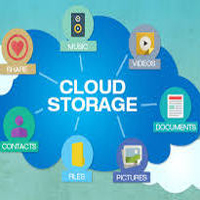 It’s estimated that 42 percent of IT decision makers will increase spending on cloud computing in 2015, and enterprises with over 1,000 employees are projected to increase their cloud spending by 52 percent. Some of this spending will be for storage, given the rapid acceleration of data under management and the need to find new ‘homes’ for this data.
It’s estimated that 42 percent of IT decision makers will increase spending on cloud computing in 2015, and enterprises with over 1,000 employees are projected to increase their cloud spending by 52 percent. Some of this spending will be for storage, given the rapid acceleration of data under management and the need to find new ‘homes’ for this data.
Here are five leading cloud storage solutions, and the value propositions they present to IT and end-users.
Amazon S3 is object-oriented storage that can containerize applications and the associated data and resources that they consume. This storage can scale up or down upon demand, and you only pay for what you use. Amazon has used S3 successfully for its own extensive operations.
S3 can be adapted for storage of content, data backups, and archiving and disaster recovery. It is fully integrated with other Amazon cloud services including Amazon Elastic Compute Cloud (EC2), which features workflows that allow IT to easily scale resources up or down, and Amazon Elastic Block Store (EBS), which provides block-level storage volumes for use with virtual servers in Amazon EC2.
Amazon Glacier is a cold storage solution that addresses the need to store vast repositories of seldom accessed data inexpensively… Read More
Amazon’s Cloud Challenges Alibaba
Excerpted from Want China Times Report
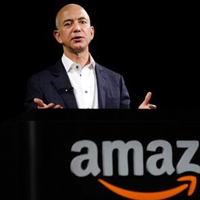 Although Chinese e-commerce giant Alibaba has not yet opened operations in the US, the rapid development of US e-retailer Amazon, particularly in cloud computing, poses a great challenge to the Chinese company, the Shanghai-based China Business News reports.
Although Chinese e-commerce giant Alibaba has not yet opened operations in the US, the rapid development of US e-retailer Amazon, particularly in cloud computing, poses a great challenge to the Chinese company, the Shanghai-based China Business News reports.
Alibaba created a miracle in September 2014 with a record-breaking flotation on the New York Stock Exchange (NYSE). The rise in its stocks sent the company’s value to over $231 billion, exceeding the combined market capitalization of Amazon and eBay, the two leading US e-commerce companies.
However, Amazon’s shares have jumped about 59.38% from $284 to $452.65 over the past six months. At its closing share price on June 26th, Amazon’s market value was $203.45 billion, not far off Alibaba’s $205.29 billion.
The main driving force behind the rise in Amazon’s shares however was not its e-commerce business but its cloud computing services, the report said.
Although Alibaba has not reached out to the US, the fight for investors and capital and the development of cloud computing has pitted Alibaba founder Jack Ma against Amazon founder Jeff Bezos, according to the report… Read More
Cloud Success Reality for Business
Excerpted from CloudTech Report by James Bourne
 Everyone is looking for that silver bullet which makes their cloud implementations a success. It’s little wonder that events such as Cloud World Forum and Cloud Expo are at the forefront of executives’ minds.
Everyone is looking for that silver bullet which makes their cloud implementations a success. It’s little wonder that events such as Cloud World Forum and Cloud Expo are at the forefront of executives’ minds.
At Cloud World Forum in London last week, MongoDB VP Strategy Kelly Stirman spoke of five directions in which the industry is changing, and how companies can make their cloud success a reality: embrace failure, double down on ops, and pick your partners wisely.
Rule number one, Stirman argued, was to embrace failure. To be able to embrace failure, you need to iterate quicker. “Today, customers expect applications faster,” he tells CloudTech. “When you wake up in the morning, you look for apps to have been installed on your phone, and to do that people need to embrace a more iterative project development lifecycle.
“Cloud makes this possible because the lead time to do things and the cost to do things is so much less, that it becomes reasonable to screw up and then recover,” he adds. “Most people aren’t comfortable with that.”
Quick iteration links in to point number two — move beyond lift and shift. Amazon is not doing releases every few days, but every few seconds… Read More
Coming Events of Interest
ADRM Working Group Meeting — July 30th via Global Videoconference. Contact the DCIA for information about joining the group and attending the meeting that will focus on interoperability among DRM platforms and simplifying DRM implementation.
Cloud Computing Boot Camp — July 30th in Washington, DC. Designed for small-to-medium businesses (SMBs) and their counterparts in government agencies and healthcare organizations whose responsibilities include evaluating, purchasing, and implementing cloud-based solutions.
The Internet of Things (IoT) Show — September 2nd-23rd in Singapore. The IoT Show will facilitate new collaborations and partnerships as well as generate new ideas and thinking. The IoT Show is about getting the prototypes out of the lab and into the market.
Digital Hollywood Fall — October 19th-22nd in Marina Del Rey, CA. The future of the entertainment industry. Digital Hollywood debuted in 1990 and has from its start been among the leading trade conferences in its field.
2015 US Cyber Crime Conference — November 18th-20th in National Harbor, MD. This is the only event of its kind that provides both hands-on digital forensics training and an interactive forum for cyber professionals to network.
Internet of Things World Forum (IoTWF) — December 6th-8th in Dubai, . IoTWF is an exclusive event that brings together the best and brightest thinkers, practitioners, and innovators from business, government, and academia to accelerate the market adoption of the Internet of Things.
